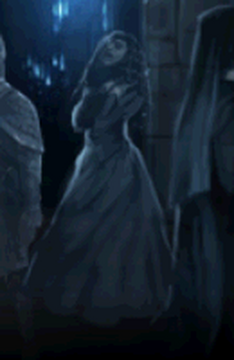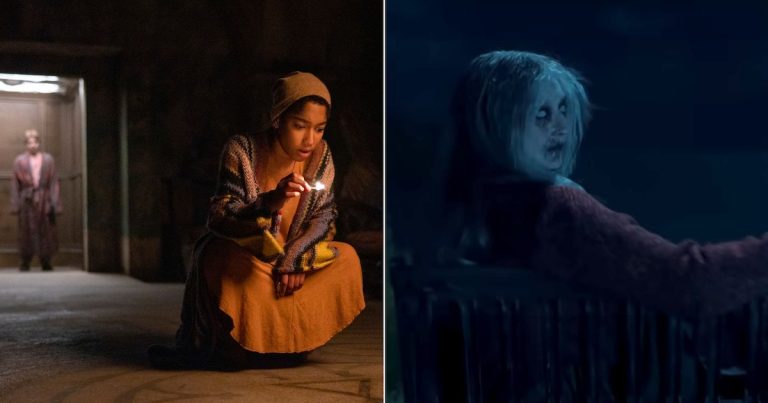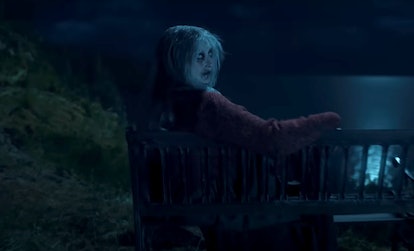Who Is The Portrait Of A Hideous Woman?
Have you ever come across a portrait of a hideous woman that left you questioning the identity behind the twisted features? It’s intriguing, isn’t it? Well, in this article, we delve into the mysterious world of art and explore the enigma behind the portrait of a hideous woman. Get ready to uncover the secrets and unravel the story behind this captivating piece of artwork.
Now, we all know that beauty is subjective, but there’s something about this portrait that goes beyond conventional notions of attractiveness. It grabs your attention and holds it tightly, leaving you curious about the identity of the woman depicted. Who is she? What is her story? These are the burning questions that we seek to answer as we embark on a journey into the depths of artistry and imagination.
In this article, we’ll explore different interpretations, analyze the techniques used by the artist, and delve into the history and symbolism surrounding the portrait. So, fasten your seatbelts and get ready to dive into the world of art as we unravel the captivating mystery behind the portrait of a hideous woman.
Curious to know who the portrait of a hideous woman depicts? Well, the answer lies in the famous painting by Francisco Goya called “Saturn Devouring His Son.” Although the title doesn’t explicitly mention a hideous woman, the central figure in the painting is often interpreted as a representation of a monstrous female figure. The distorted features, wild eyes, and disheveled hair contribute to her eerie appearance. Goya’s work is known for its dark and haunting themes, and this particular piece continues to captivate viewers with its unsettling portrayal of a hideous woman.

Who is the Portrait of a Hideous Woman?
A portrait is a representation of a person, capturing their likeness and essence. It is a visual medium that allows us to delve into the depths of human emotions and experiences. Portraits often depict beauty, grace, and elegance, but there are instances where artists have chosen to portray the opposite – the portrait of a hideous woman. This unconventional approach challenges traditional notions of beauty and raises questions about societal standards and the nature of art itself.
The Power of the Unconventional
In a world where beauty is often equated with perfection, the portrait of a hideous woman disrupts the norm and confronts us with a different perspective. It challenges our preconceived notions and forces us to confront our own biases and prejudices. By portraying someone who may not conform to conventional standards of beauty, artists push the boundaries of art and provoke us to question our own definitions of aesthetics.
The portrait of a hideous woman serves as a powerful reminder that beauty is not solely defined by physical appearance. It highlights the complexity and diversity of the human experience and emphasizes the importance of inner beauty, resilience, and strength. It is a celebration of individuality and a rejection of superficial judgments.
The Representation of Inner Turmoil
When artists choose to depict a hideous woman, they often seek to capture the inner turmoil and struggles that she may be experiencing. The portrait becomes a visual manifestation of her emotions, fears, and vulnerabilities. It offers a window into her soul, allowing us to empathize with her journey and contemplate the universal themes of human suffering and resilience.
Through the use of symbolism, color, and composition, artists convey the inner world of the hideous woman. They may incorporate elements that represent pain, darkness, or despair, creating a powerful visual narrative that resonates with viewers. The portrait becomes a mirror through which we can reflect on our own emotions and experiences, fostering a deeper understanding of the human condition.
Breaking Free from Stereotypes
The portrait of a hideous woman also challenges stereotypes and societal expectations. It disrupts the notion that beauty is synonymous with worth and challenges the objectification of women in art and media. By presenting a woman who may not conform to traditional standards of beauty, artists defy societal norms and offer an alternative perspective.
This unconventional approach encourages us to question the influence of societal beauty standards on our perceptions and judgments. It prompts us to consider the impact of media and popular culture on our self-esteem and sense of worth. The portrait of a hideous woman becomes a catalyst for conversations about body positivity, self-acceptance, and the importance of inner beauty.
In conclusion, the portrait of a hideous woman is a powerful artistic expression that challenges our perceptions of beauty and confronts us with uncomfortable truths. It serves as a reminder that beauty comes in many forms and that true worth lies beyond physical appearance. These portraits provoke us to question societal norms and reflect on our own biases and judgments. They offer a glimpse into the complexity of the human experience and remind us of the importance of empathy, acceptance, and self-love.
Key Takeaways: Who is the portrait of a Hideous Woman?
- The portrait of a Hideous Woman refers to a famous painting by an unknown artist.
- It is believed to depict a woman considered unattractive by societal standards.
- The portrait raises questions about the definition of beauty and the perception of attractiveness.
- Many art enthusiasts find the painting intriguing and appreciate its unique portrayal of beauty.
- While the identity of the woman in the portrait remains unknown, it continues to spark curiosity and discussion among art lovers.
Frequently Asked Questions
Here are some frequently asked questions about the portrait of a hideous woman:
1. What is the story behind the portrait of a hideous woman?
The portrait of a hideous woman is a famous painting that has been shrouded in mystery for centuries. It is believed to have been created by an unknown artist during the Renaissance period. The painting depicts a woman with grotesque features, emphasizing her wrinkles, warts, and other facial imperfections. The story behind the painting is unclear, with various theories suggesting that it was either a satirical depiction of a real person or a symbolic representation of vanity and the fleeting nature of beauty.
Regardless of its origin, the portrait has captured the imagination of art enthusiasts and has become a subject of fascination and intrigue.
2. What is the significance of the hideous woman in the portrait?
The hideous woman in the portrait serves as a powerful symbol that challenges conventional notions of beauty. Unlike traditional portraits that idealize their subjects, this painting confronts viewers with an unflattering representation of a woman’s appearance. By exaggerating her flaws, the artist forces us to question our preconceived ideas of attractiveness and confront the uncomfortable reality that beauty is not always synonymous with perfection.
Furthermore, the hideous woman in the portrait can be seen as a commentary on the fleeting nature of beauty. Time eventually catches up with everyone, and the portrait serves as a reminder that physical appearances are ephemeral. It encourages us to look beyond the surface and appreciate the inner qualities that truly define a person.
3. Is the portrait of a hideous woman based on a real person?
While there are speculations that the portrait of a hideous woman may be based on a real person, there is no concrete evidence to support this claim. The identity of the woman in the painting remains a mystery, and it is unclear whether she was a historical figure or a fictional creation of the artist’s imagination.
It is important to note that during the Renaissance period, artists often drew inspiration from a variety of sources, including mythological figures, biblical stories, and their own imagination. Therefore, it is possible that the hideous woman in the portrait represents an archetype rather than a specific individual.
4. Where can the portrait of a hideous woman be found?
The portrait of a hideous woman has become an iconic image in art history and can be found in various museums and private collections around the world. One notable location where the painting is housed is the Museum of Fine Arts in Boston, Massachusetts. However, it is important to note that the painting may not always be on display, as museums often rotate their collections for exhibitions and conservation purposes.
If you are interested in viewing the portrait, it is recommended to check with the specific museum or gallery beforehand to confirm its availability.
5. What is the artistic value of the portrait of a hideous woman?
The artistic value of the portrait of a hideous woman lies in its ability to challenge traditional notions of beauty and provoke thought and discussion. The painting defies the conventional expectations of a portrait by presenting a visually unappealing subject, forcing viewers to reevaluate their perceptions of attractiveness.
Furthermore, the technical skill and attention to detail demonstrated by the artist in capturing the woman’s imperfections are worth noting. The intricate rendering of wrinkles, warts, and other facial features showcases the artist’s mastery of their craft and their ability to elicit an emotional response from the audience.

Grotesque or Fascinating? Interpreting ‘The Ugly Duchess’
Final Thought: Unveiling the Portrait of the Hideous Woman
As we come to the end of our journey through the mysterious portrait, we are left with more questions than answers. Who is this hideous woman depicted in the painting? What is her story? While we may never know the exact identity of the subject, the enigma surrounding her only adds to the allure of the artwork.
Throughout history, art has always had the power to evoke strong emotions and provoke deep contemplation. The portrait of the hideous woman accomplishes just that. It challenges our notions of beauty and forces us to confront the unconventional and unconventional standards of attractiveness. By defying societal norms, this painting pushes us to question our own biases and preconceived notions.
In the realm of art, beauty is subjective, and the hideous woman’s portrait serves as a powerful reminder of that. It urges us to look beyond the surface and appreciate the complexity and depth that lies within every individual. This painting teaches us the importance of embracing the uniqueness and imperfections that make us who we are.
While we may not have all the answers about the hideous woman, the true beauty of art lies in its ability to spark our imagination and ignite conversations. The portrait serves as a catalyst for introspection, encouraging us to reflect on our own definitions of beauty and the stories that lie behind the faces we encounter. So, let us embrace the mystery and continue to explore the world of art, where even the hideous can be breathtakingly beautiful.






